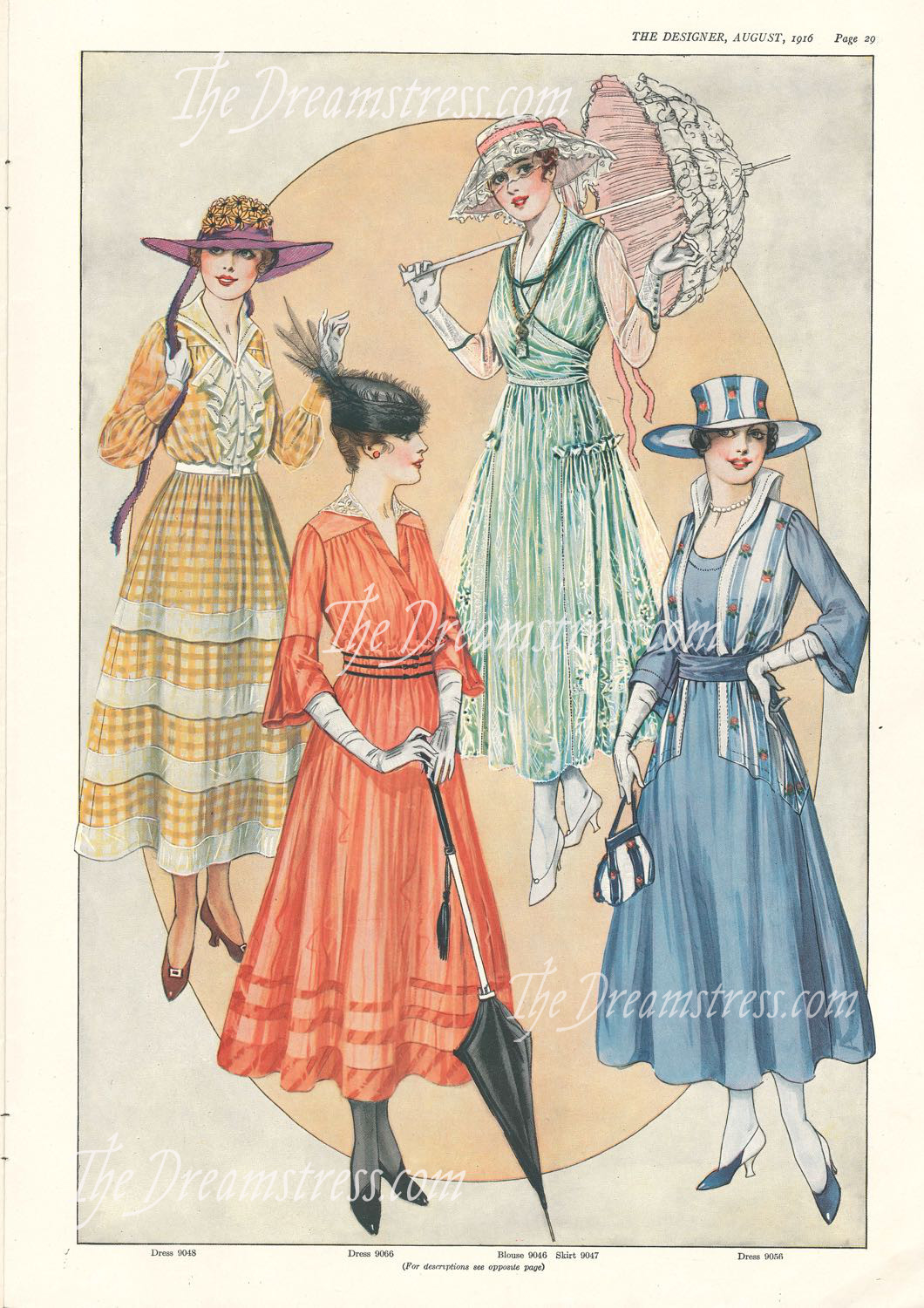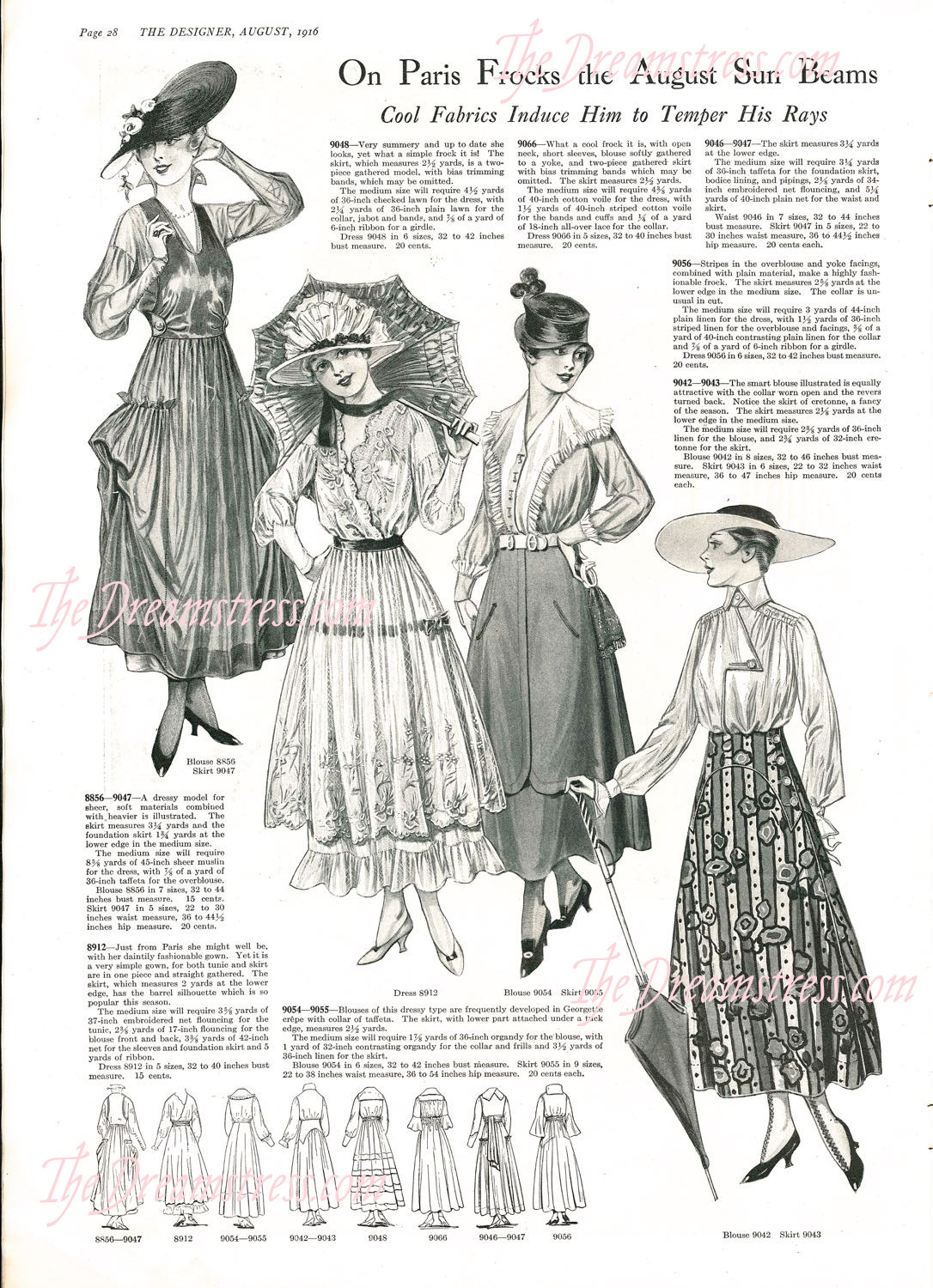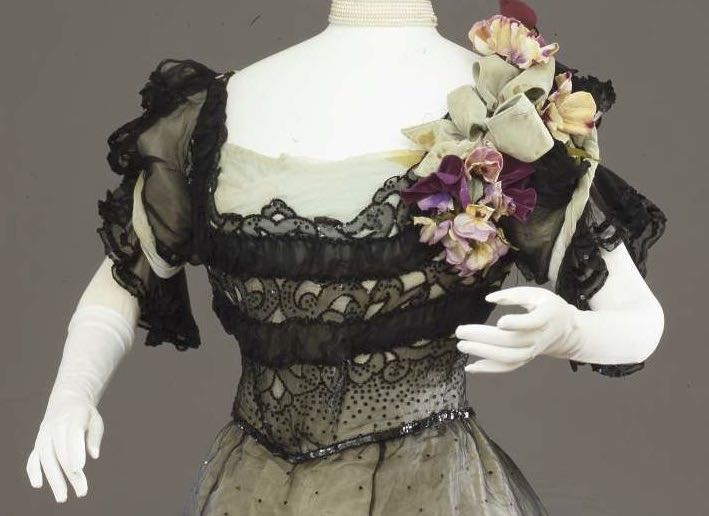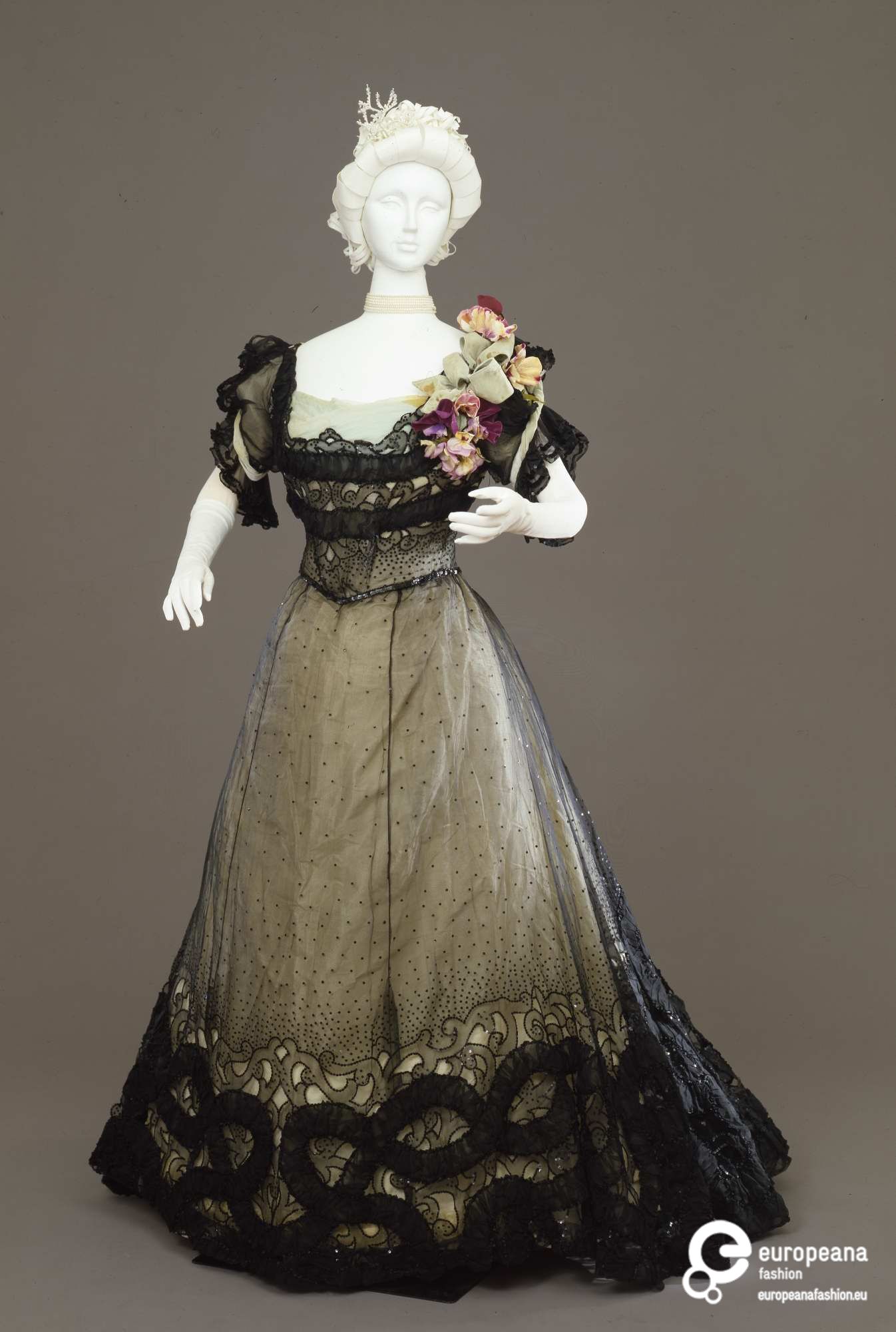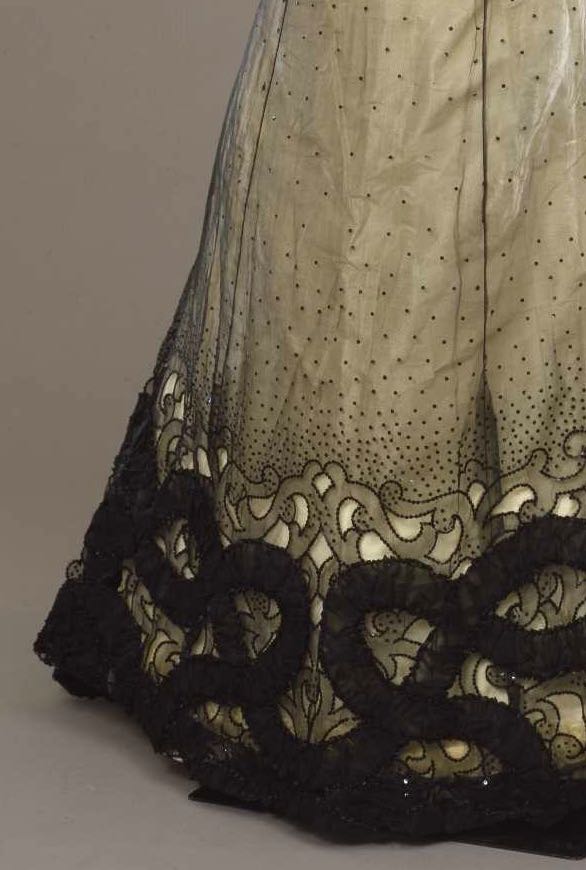It’s the last week of March, which means the last week of #GreatWarMarch themed Rate the Dress picks. Next week will be something totally different. Maybe 18th century. Maybe 1860s. Who knows! Definitely not from 1900-1924 though! To finish up our month-long celebration of Edwardian fashion & history, this week’s Rate the dress is a really, really, fascinating iridescent silk taffeta number from the mid-1910s.
Last week: An Edwardian Evening Dress
Poor dress last week. Not only did it have a less-than-ideal mannequin, but no one loved it enough to give it a 10! It did get some rather nice ratings – but also a lot of not nearly so nice numbers. The layers of detailing, particularly the organza ruffles, velvet cords, and floral corsage (so, pretty much all of them) came in for a lot of criticism. Just about everyone agreed that the cut-out layer was glorious, but the more that got added on top of it, the less you liked the dress!
The Total: 6.4 out of 10
Wah wah.
This week: A mid-1910s iridescent silk taffeta ensemble
Lauren of Wearing History shared this dress on Instagram as part of #GreatWarMarch, and I thought it was so fascinating. It’s so striking – just perfect for Rate the Dress.

Dress, mid-1910s, ‘Landum Minneapolis’, silk taffeta, Goldstein Museum of Design, 2006.043.006a-c
This outfit was probably worn by the donor’s grandmother, Martha F. Harris Hynes. She was born in 1882, so would have been in her mid-late 30s when she wore it.
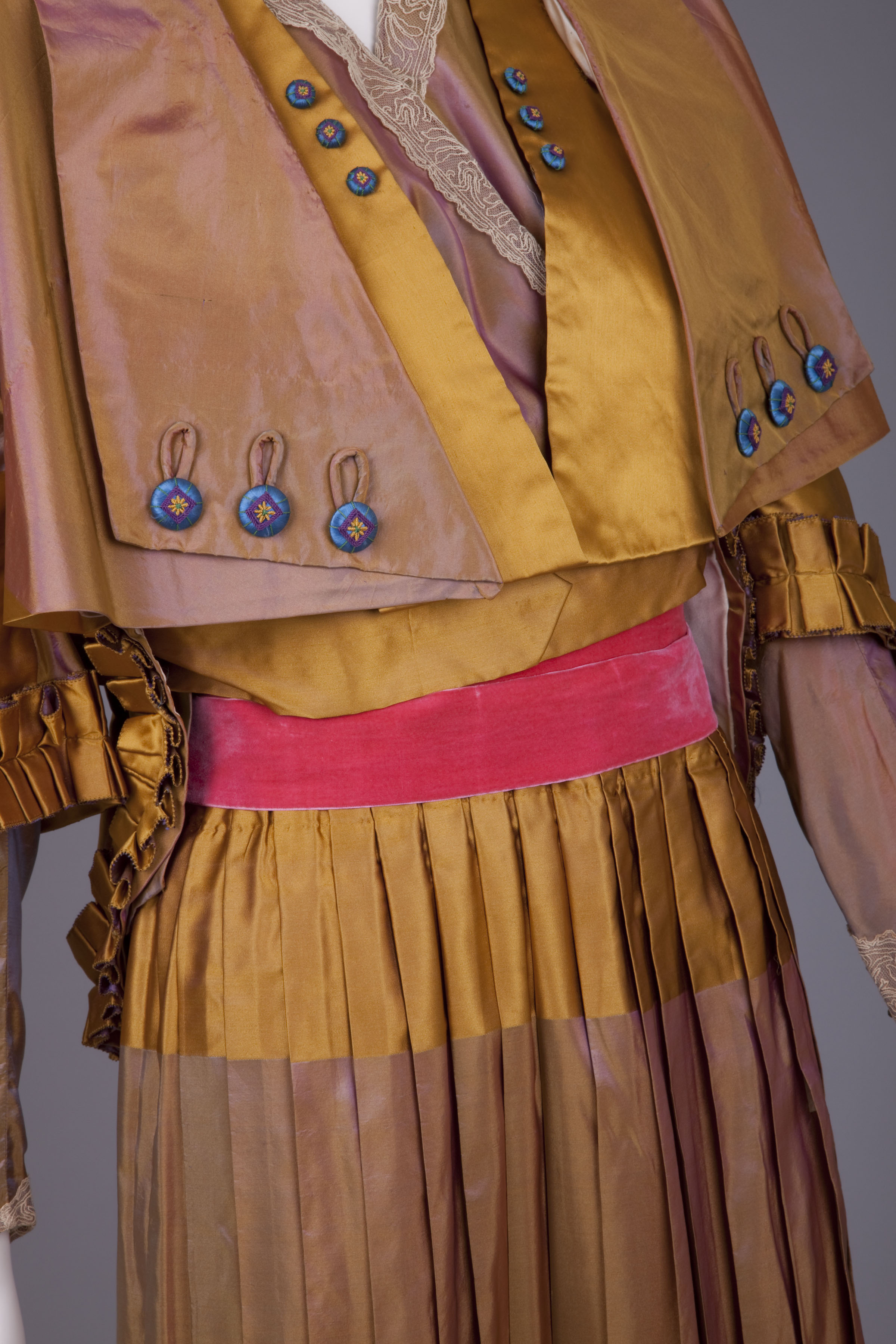
Dress, mid-1910s, ‘Landum Minneapolis’, silk taffeta, Goldstein Museum of Design, 2006.043.006a-c
The Goldstein Museum of Design identifies this as an evening dress, but the long sleeves, higher neckline, and overjacket are all unusual features for an evening garment. This is more likely a formal afternoon ensemble: the type that might have been worn to a wedding (usually held in the day in the 1910s) or a very formal daytime event.
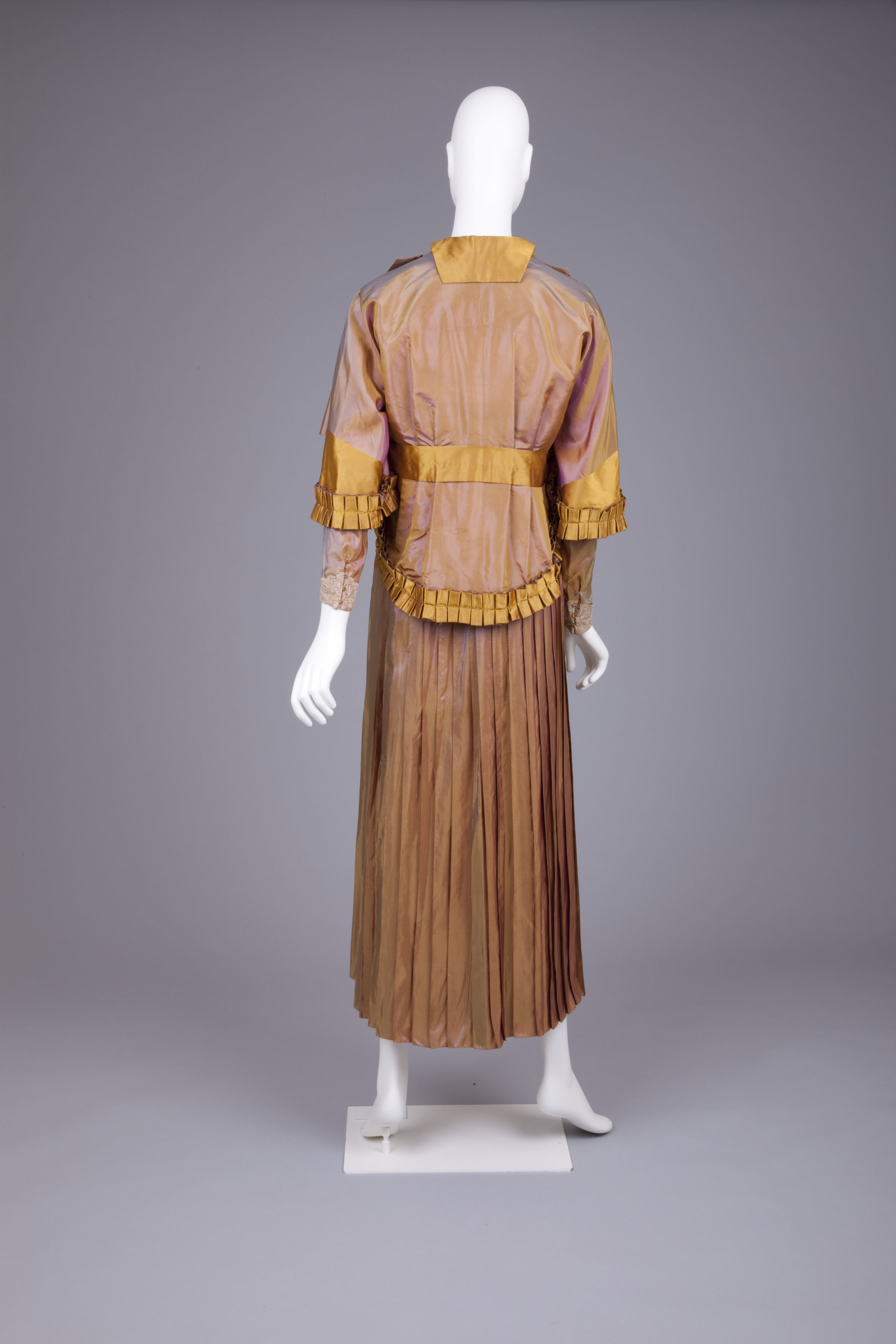
Dress, mid-1910s, ‘Landum Minneapolis’, silk taffeta, Goldstein Museum of Design, 2006.043.006a-c
The outfit consists of a jacket with 3/4 sleeves, cape-effect at the front, and ruffled peplum back. A belt of the brighter gold silk taffeta holds the back of the jacket snuggly to the body, and sits above the vivid pink velvet sash of the dress. Sadly there are no image of the dress without the jacket.
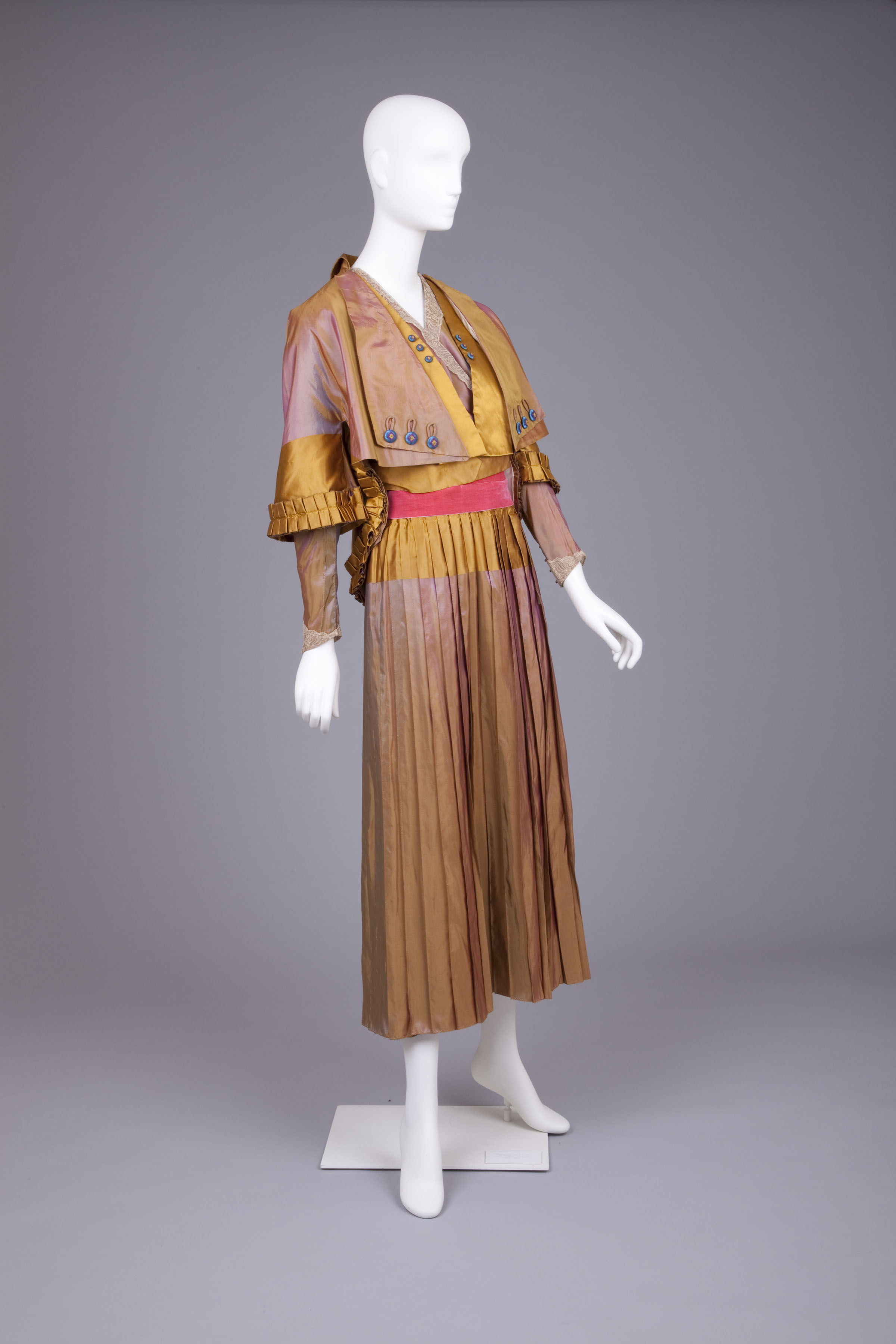
Dress, mid-1910s, ‘Landum Minneapolis’, silk taffeta, Goldstein Museum of Design, 2006.043.006a-c
Typically of mid-1910s designs, this ensemble includes a bold and playful mix of colours and design elements. Complementary hues are offset by touches of clashing colours. A nod to Orientalism is combined with ruffles and a back view with more than a touch of 18th century inspiration. Vertical, horizontal and angled lines all work together to bounce the eye around the garment.
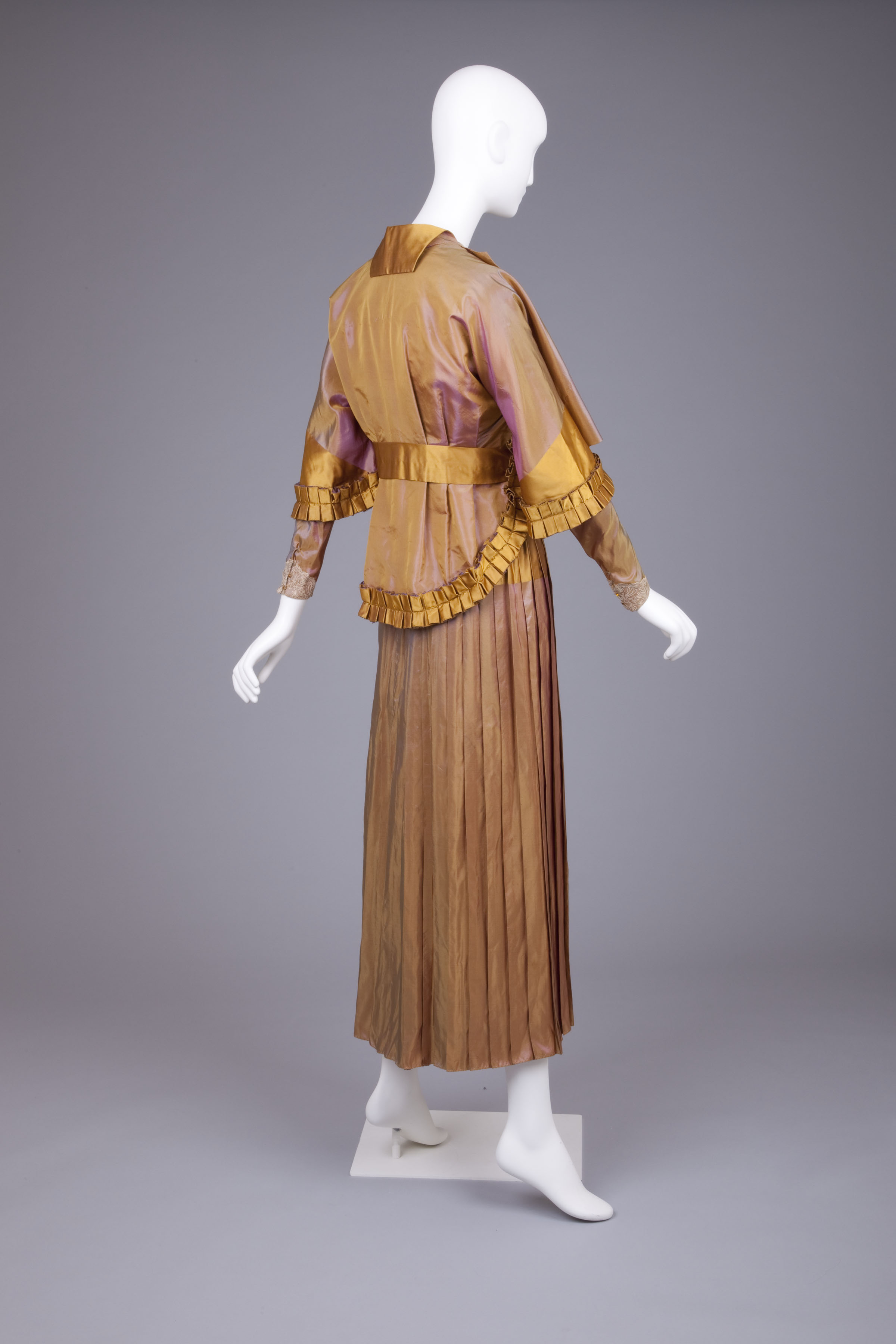
Dress, mid-1910s, ‘Landum Minneapolis’, silk taffeta, Goldstein Museum of Design, 2006.043.006a-c
From some angles the garment is simple and harmonious, from others it’s visually assertive: a vivacious mix of colours and elements.

Dress, mid-1910s, ‘Landum Minneapolis’, silk taffeta, Goldstein Museum of Design, 2006.043.006a-c
What do you think? Does it work?
Rate the Dress on a Scale of 1 to 10
(as usual, nothing more complicated than a .5. I also hugely appreciate it if you only do one rating, and set it on a line at the very end of your comment, so I can find it! Thanks in advance!)

